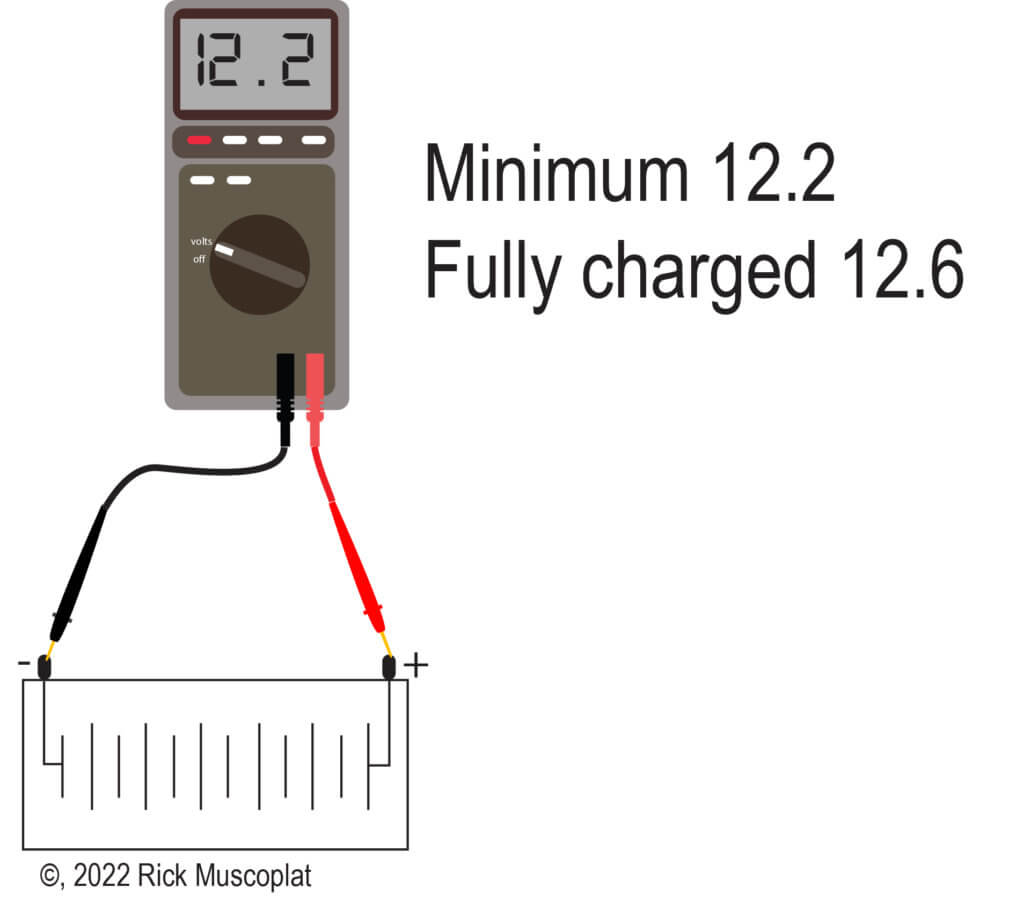What are the symptoms of a bad starter motor
The four most common symptoms of a bad starter motor
A weak battery or corroded battery terminals can often mimic the symptoms of a bad starter motor. For example, here at the most common symptoms of a bad starter motor:
1) A single click when you turn the key can be a symptom of a bad starter or battery or connection issue
A single click with each key turn sounds like this:
A weak battery or corroded battery terminals can provide just enough power to the starter to operate the starter solenoid and get it to engage with the flywheel, but not give it enough power to crank the engine. So your first step if you hear this sound is to clean the battery terminals and test the battery. If the battery is fully charged and the terminals are clean a single click is a symptom of a bad starter or a seized engine.
To eliminate a seized engine as the possibility, simple connect a socket and ratchet to the bolt on the harmonic balancer and try trying the engine by hand. If it turns, it’s not seized and that’s proof that you have a bad starter.
2) Rapid clicking can be a symptom of a bad starter or battery or connection issue
A rapid clicking, almost machine gun sound sounds like either of these examples:
The rapid clicking sound is coming from the starter motor solenoid bouncing back and forth instead of pulling in and staying in. The bounce is most often caused by a weak battery that provides enough power to the solenoid pull-in coils, but not enough power for the hold-in coils. For more information on how a starter solenoid works, see this post.
However, if you’ve cleaned the battery terminals and are sure the battery is fully charged, then the rapid clicking can also be a symptom of a bad starter solenoid or pitted solenoid contacts that prevent the solenoid from connecting power to the starter motor windings. In some cases, you can clean the contacts, but in most cases, I recommend replacing the starter.
3) A whirring sound is always a symptom of a worn starter drive in the starter motor
A whirring sound as soon as you turn the key to start that sounds like this:
A starter drive is a one-way clutch device that rotates the flywheel until the engine starts running on its own. At that point, the one-way clutch kicks the starter drive backwards into the starter so it doesn’t damage the flywheel teeth. When the starter drive clutch fails, it engages with the flywheel but doesn’t turn it. You can replace just the starter drive (also called a “Bendix”), but I recommend replacing the entire starter. For more information on how a starter drive works, see this post.
4) Cranking then whirring is also a symptom of a bad starter
The stater starts cranking the engine but immediately makes a whirring sound like this:
This is the sound of a starter drive at the early stages of failure. If you don’t fix it, it will eventually sound like symptom #3
How to check the battery
Check the battery’s state-of-charge using a multimeter. Battery voltage is directly related to the battery’s temperature. If you’re checking in cold weather, refer to this chart to obtain the correct voltage for the battery temperature.
If voltage is below 12.2 volts, remove the terminals and clean the cable terminals and battery posts. Reinstall the terminals and check battery voltage again. If the battery is discharged below 12.2 volts, it must be charged before proceeding.
 Check for corroded battery terminals and clean
Check for corroded battery terminals and clean
Battery terminal corrosion can be visible or invisible. Never assume the battery terminals are clean with just a visual inspection. Corrosion between the terminal and post can dramatically reduce the alternator’s ability to charge the battery.
Connect a backup power source to the OBD II port to prevent the loss of throttle body home data and to eliminate the need to reprogram the radio and power window/seat memory settings.
Then disconnect the battery terminals one at a time and use a wire brush to remove all corrosion.
Clean ground connections
A bad ground connection can cause weak starter performance or even cause a no crank condition. Clean the ground connection between the battery negative post and the engine, between the battery negative post and the fender or radiator support, between the engine and the engine compartment firewall.
Bad ignition switch
If power can’t get to the starter relay or starter solenoid, the starter motor can’t crank the engine. Remove the starter motor solenoid power wire. Connect your meter to the starter solenoid wire and the other end to ground. Turn the key to START. If you see full battery voltage on your meter, the ignition switch is good and that also proves the neutral safety switch is good. If you don’t see battery voltage, test the neutral safety switch.
Test neutral safety switch
On a vehicle with an automatic transmission, the shift lever must be in the PARK or Neutral position to allow starting. If the vehicle won’t start in PARK, move it to the NEUTRAL position and try again.
With the test leads still connected to the battery terminals, set your meter to MIN/MAX. Then crank the engine to start it. NOTE: If it starts right away and you can’t get a reading, remove the fuel pump fuse and try again.
The cranking voltage will drop. If the voltage drops below 9.6-volts, that can cause critical engine computers to stop working, resulting in a no start condition.
©, 2022 Rick Muscoplat
Posted on by Rick Muscoplat